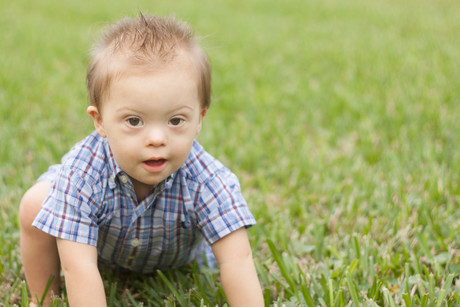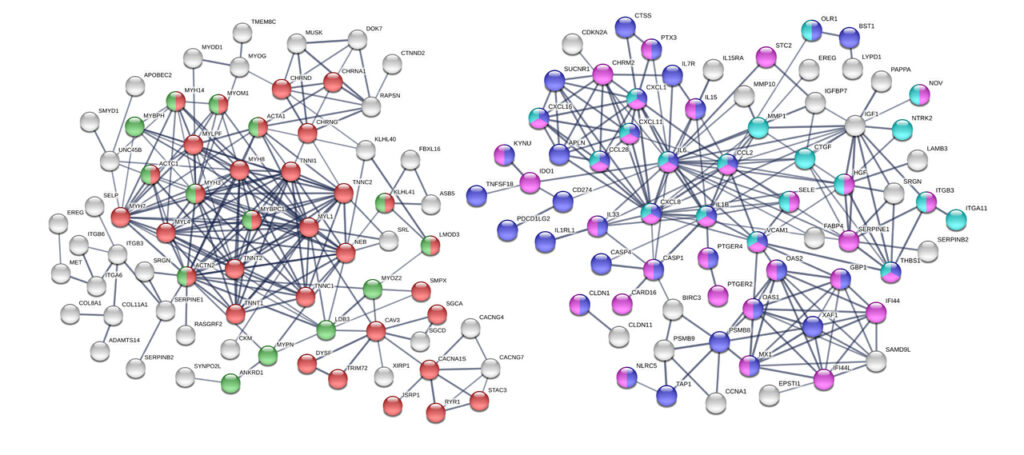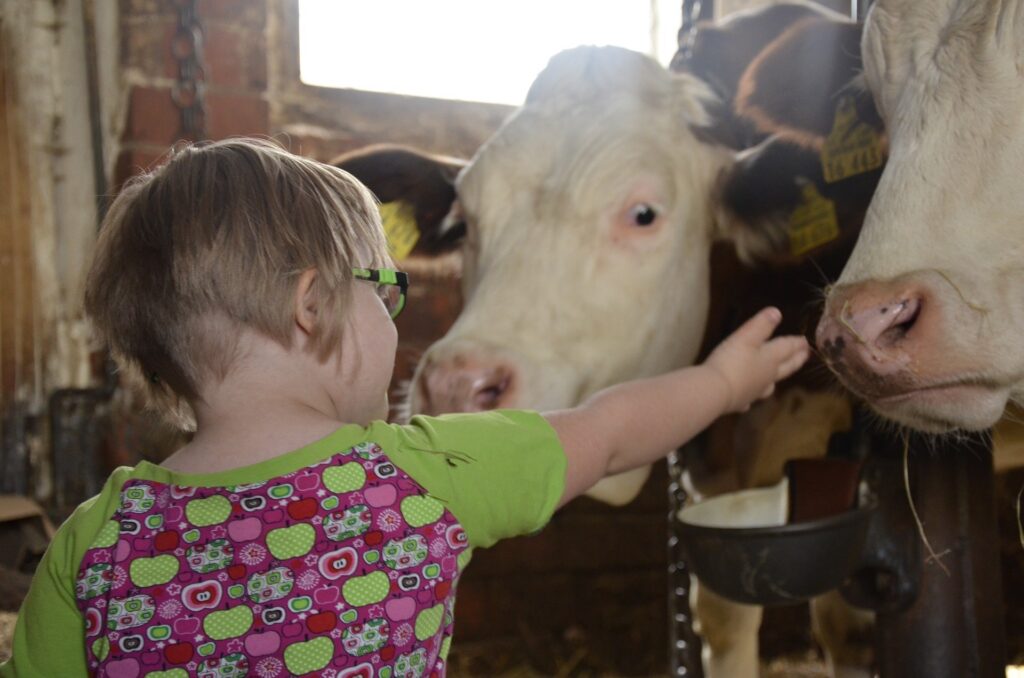In this article, you will discover exciting breakthroughs and advancements in our understanding of Down’s Syndrome. New research has shed light on the underlying causes of this genetic condition, revealing potential avenues for treatment and improved quality of life for individuals affected by Down’s Syndrome. With a friendlier tone, we will take you on a journey to explore these new insights and their potential impact on the lives of those with Down’s Syndrome.

Understanding Down’s Syndrome
Down’s Syndrome, also known as Trisomy 21, is a genetic disorder that occurs when an individual has three copies of chromosome 21, instead of the usual two copies. This additional genetic material leads to a range of physical, intellectual, and developmental challenges. Down’s Syndrome is named after John Langdon Down, the British physician who first described the condition in the late 19th century.
Definition of Down’s Syndrome
Down’s Syndrome is a lifelong condition characterized by a variety of physical features, intellectual disabilities, and medical conditions. It manifests differently in each individual, but common symptoms include distinctive facial appearance, low muscle tone, cognitive delays, and an increased risk of certain health problems.

Causes of Down’s Syndrome
Down’s Syndrome is caused by the presence of an extra copy of chromosome 21. This extra genetic material can originate from three different sources: nondisjunction, translocation, or mosaicism. Nondisjunction occurs when the chromosomes fail to separate properly during the formation of egg or sperm cells, resulting in an extra copy of chromosome 21. Translocation happens when a portion of chromosome 21 breaks off and attaches itself to another chromosome, while mosaicism occurs when some cells in the body have the usual two copies of chromosome 21, and others have three.
Prevalence and statistics
Down’s Syndrome is the most common chromosomal disorder, affecting approximately 1 in every 700 births globally. The incidence of Down’s Syndrome varies depending on factors such as maternal age, with the likelihood increasing as women get older. It is estimated that around 5,300 babies are born with Down’s Syndrome in the United States each year.

Symptoms and Characteristics of Down’s Syndrome
Physical features
One of the hallmark characteristics of Down’s Syndrome is its physical features. Individuals with Down’s Syndrome often have a distinct facial appearance, including almond-shaped eyes, a small nose, and a flat facial profile. They may also have a small mouth with a protruding tongue, short stature, and a single crease across the palm of their hand. It is important to note that while these physical features are common, the severity and presence of these traits can vary widely among individuals.
Intellectual and developmental disabilities
In addition to physical features, individuals with Down’s Syndrome typically experience intellectual and developmental disabilities. They may have mild to moderate cognitive delays, which can impact their learning abilities and overall intellectual functioning. Language and speech development may also be delayed. Furthermore, individuals with Down’s Syndrome may experience difficulties with motor skills, such as walking and coordination.
Medical conditions commonly associated with Down’s Syndrome
Down’s Syndrome is often associated with specific medical conditions. These can include congenital heart defects, hearing loss, vision problems, thyroid dysfunctions, and gastrointestinal issues. The presence and severity of these conditions can vary greatly among individuals with Down’s Syndrome, and regular medical screenings and interventions are crucial in managing and treating these associated health issues.
Diagnosis of Down’s Syndrome
Prenatal screening tests
During pregnancy, various prenatal screening tests can assess the risk of Down’s Syndrome. These tests include a combination of blood tests and ultrasound measurements to determine the likelihood of the condition. Non-invasive prenatal testing (NIPT) is one such screening method that analyzes fetal DNA in the mother’s blood to assess the risk of chromosomal abnormalities, including Down’s Syndrome.
Diagnostic tests
If a prenatal screening test indicates a high risk of Down’s Syndrome, further diagnostic tests may be recommended to provide a definitive diagnosis. These tests, such as chorionic villus sampling (CVS) and amniocentesis, involve obtaining samples of cells from the placenta or amniotic fluid and analyzing them for genetic abnormalities. These diagnostic tests can confirm the presence of Down’s Syndrome with a high degree of accuracy.

Treatment and Management of Down’s Syndrome
Early intervention therapies
Early intervention therapies are an integral part of managing the challenges associated with Down’s Syndrome. These therapies focus on maximizing the individual’s developmental potential and independence. Early intervention may include speech therapy to improve communication skills, physical and occupational therapy to enhance motor skills and coordination, and educational programs tailored to the individual’s needs.
Medical interventions
Given the increased risk of certain medical conditions, regular medical check-ups and interventions are essential for individuals with Down’s Syndrome. This can involve monitoring and managing specific health issues, such as heart defects, hearing and vision problems, and thyroid disorders. Close collaboration with healthcare professionals ensures that appropriate medical interventions are provided, promoting the overall well-being of individuals with Down’s Syndrome.
Educational support and inclusion
Education plays a crucial role in the lives of individuals with Down’s Syndrome, promoting intellectual stimulation, social interaction, and skill development. Inclusive education models, where individuals with disabilities are educated alongside their typically developing peers, have been shown to be beneficial. Accommodations and individualized education plans (IEPs) are often implemented to meet the unique learning needs of individuals with Down’s Syndrome, ensuring they receive the support necessary to thrive academically.
Research and Advancements in Down’s Syndrome
Genetic research
Ongoing genetic research has provided valuable insights into the underlying causes of Down’s Syndrome and the development of potential therapies. Scientists are increasingly exploring gene-editing techniques to address the extra copy of chromosome 21. While these studies are still in their early stages, they hold promise for future advancements in the treatment of Down’s Syndrome.
Neurological studies
The neurological aspects of Down’s Syndrome are another area of research focus. Studies have shown differences in brain structure and function in individuals with Down’s Syndrome, providing valuable information to better understand the cognitive and developmental delays associated with the condition. This research may lead to interventions aimed at improving cognitive functioning and promoting independent living skills.
Experimental treatments
Experimental treatments and interventions are also being explored to improve the quality of life for individuals with Down’s Syndrome. These include cognitive and behavioral therapies, pharmacological interventions, and novel approaches such as gene therapy and stem cell research. While these treatments are still in the developmental phase, they show promise for potentially enhancing cognitive abilities and addressing specific health issues associated with Down’s Syndrome.

Living with Down’s Syndrome
Support and resources for individuals with Down’s Syndrome
A variety of support systems and resources are available to individuals with Down’s Syndrome and their families. These can include early intervention programs, community organizations, and advocacy groups that provide assistance, guidance, and information on available services. Additionally, support networks, both online and in person, serve as vital sources of encouragement and shared experiences for individuals with Down’s Syndrome and their families.
Family and community involvement
Family and community involvement play a crucial role in creating a supportive environment for individuals with Down’s Syndrome. A strong network of family members, friends, and professionals can provide emotional support, practical assistance, and opportunities for social integration. Community initiatives that promote inclusive activities and events foster a sense of belonging and acceptance for individuals with Down’s Syndrome.
Advocacy and empowerment
Advocacy and empowerment are essential in promoting the rights and inclusion of individuals with Down’s Syndrome. Organizations like the National Down Syndrome Society (NDSS) and Down Syndrome International (DSi) work tirelessly to advocate for the rights and well-being of individuals with Down’s Syndrome, raise awareness, and promote policies that promote inclusivity and equality.
Challenges and Stigma Surrounding Down’s Syndrome
Discrimination and prejudice
Despite progress in promoting acceptance and inclusion, individuals with Down’s Syndrome still face discrimination and prejudice in various aspects of life. Stereotypes and misconceptions about their abilities can lead to limited opportunities for education, employment, and social participation. It is crucial to challenge and overcome these biases to create a more inclusive and accepting society.
Myths and misconceptions
Myths and misconceptions about Down’s Syndrome persist, perpetuating misunderstandings and damaging stereotypes. Education and awareness initiatives are vital in debunking these myths and providing accurate information about the condition. By dispelling misconceptions, we can encourage a more empathetic and supportive environment for individuals with Down’s Syndrome.
Breaking down barriers
Breaking down barriers is essential in creating a society that values and includes individuals with Down’s Syndrome. This involves promoting accessible education and vocational training opportunities, fostering inclusive workplaces, and embracing diversity. By creating environments that celebrate differences and offer equal opportunities, we can empower individuals with Down’s Syndrome to reach their full potential and lead fulfilling lives.
Inclusion and Integration: Creating a More Inclusive Society
Education and employment opportunities
Equal access to education and employment is crucial in promoting the inclusion of individuals with Down’s Syndrome. Inclusive education models, such as mainstreaming or inclusion classrooms, ensure that individuals with Down’s Syndrome can learn alongside their typically developing peers. Similarly, creating inclusive workplaces that provide accommodations and support for individuals with disabilities fosters their participation and contribution to the workforce.
Social integration
Social integration is essential for individuals with Down’s Syndrome to lead fulfilling lives. This involves creating inclusive social activities and events that welcome individuals of all abilities. Encouraging friendships, promoting community involvement, and providing opportunities for individuals with Down’s Syndrome to participate in cultural, recreational, and social endeavors help combat isolation and promote social integration.
Promoting acceptance and understanding
Promoting acceptance and understanding is fundamental in fostering inclusive societies. It requires education and awareness campaigns that challenge stereotypes and promote empathy and respect. By highlighting the abilities, talents, and contributions of individuals with Down’s Syndrome, we can shift perceptions and create a society that embraces diversity and values the unique qualities of each individual.
Down’s Syndrome Organizations and Support Groups
National Down Syndrome Society (NDSS)
The National Down Syndrome Society (NDSS) is a leading advocacy organization dedicated to improving the lives of individuals with Down’s Syndrome. They provide resources, support, and advocacy for individuals with Down’s Syndrome and their families, advocating for policies that promote inclusivity, equality, and empowerment.
Down Syndrome International (DSi)
Down Syndrome International (DSi) is a global organization that promotes the rights and inclusion of individuals with Down’s Syndrome worldwide. They work to raise awareness, gather and disseminate information, and provide support to national organizations that advocate for individuals with Down’s Syndrome and their families.
Local support groups and initiatives
In addition to national and international organizations, local support groups and initiatives are invaluable resources for individuals with Down’s Syndrome and their families. These groups provide a sense of community, social opportunities, and support networks where individuals and families can share experiences, seek advice, and access relevant resources and services.
The Future of Down’s Syndrome
Advancements in medical treatments
The future of Down’s Syndrome holds promising advancements in medical treatments and interventions. Ongoing research sheds light on potential therapies and interventions to address the unique needs and challenges faced by individuals with Down’s Syndrome. Early detection and targeted medical interventions will likely continue to improve the overall health outcomes and quality of life for individuals with Down’s Syndrome.
Inclusive society vision
An inclusive society where individuals with Down’s Syndrome are fully integrated and valued for their unique contributions is an attainable vision for the future. By embracing diversity and recognizing the rights and abilities of individuals with Down’s Syndrome, we can build a society that promotes equal opportunities, equitable access to healthcare and education, and a sense of belonging for all.
Promoting autonomy and independence
Empowering individuals with Down’s Syndrome to lead autonomous and independent lives is a significant focus moving forward. With the right support, education, and opportunities, individuals with Down’s Syndrome can acquire essential life skills, pursue meaningful careers, and contribute to their communities. Emphasizing autonomy and independence strengthens their self-esteem, self-determination, and overall well-being.
In conclusion, understanding Down’s Syndrome is crucial in promoting acceptance, inclusion, and equal opportunities for individuals with the condition. By debunking myths, challenging stereotypes, and supporting advancements in research and treatments, we can create a future where individuals with Down’s Syndrome are valued, empowered, and fully integrated into society. Through education, advocacy, and community involvement, we can work together to build a more inclusive and compassionate world.